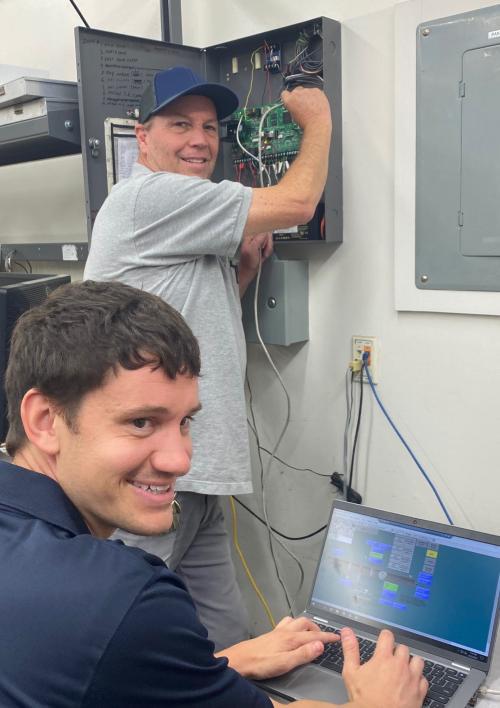Improving Customer Satisfaction, One Alarm at a Time!
Joe Lestanguet's BAS Recommission Project

Facilities Management’s R.I.S.E (Recognizing Innovative Solutions by Employees) program began in 2019 to encourage staff to propose projects or programs that improve efficiency, increase customer satisfaction, or reduce costs within their department. This quarter we’re featuring a recently completed R.I.S.E project - Joe Lestanguet’s Building Alarm System (BAS) recommission project.
Joe actually began looking into implementing this solution well before the R.I.S.E. program was established, back in January 2015. He had noticed that the alarm systems in many buildings were producing unnecessary calls to customers and technicians due to the way they were commissioned. From 2015-2021, Deferred Maintenance funding was used to upgrade some of these alarms and reduce the number of unnecessary calls, but Joe still felt there was more to be done. He applied for the R.I.S.E program with a project outline focusing on 14 critical buildings that made up a large number of the alarm calls. He then assembled a core team of people to make the project happen: John Steele, Cuong Lam, David Vignoli, Eric Davis and Jim Gribel (Eric and Jim are pictured below).
These alarm systems send alerts to customers and technicians when they detect a problem in the building, such as high temperatures in a freezer or a dirty air filter. Prior to the implementation of this program, technicians would receive over 100 calls per year - many of which were “nuisance calls” regarding smaller issues that did not need immediate attention. These calls would cost FM over $30,000 annually in after-hours overtime.

The overall goal of this project was to prevent these unnecessary calls and compartmentalize the alarms so that calls could be automatically routed to the correct shop to handle the issue. To reduce unnecessary calls, alarms were readjusted to allow for more variation from a set point - this way, calls would only be made if the variation in temperature, pressure, etc. was significant enough to be a mechanical issue and not just natural variation. Alarms were also categorized based on what equipment they were monitoring and how urgent the issue was. Prior to this, alarms were general to the entire building and thus did not define the specific issue nor communicate the level of urgency. Technicians could now better understand what issue was occurring and whether they needed to respond immediately.
By defining the level of urgency and the shop that needed to be called to solve the issue, this program also greatly increased customer satisfaction. Customers could now better understand the issue, decide if they need to respond, and contact the shop that was assigned to the alarm. Also, most importantly, they were no longer getting unnecessary calls! One customer said this project was a “life changer” as they had previously dealt with constant nuisance alarm calls throughout the day and overnight.
Joe started implementing these changes with a pilot project at the Contained Research Facility (CRF) in 2020, upon which he built the specifics of the rest of his R.I.S.E proposal. CRF alarms made up a large portion of the total after-hours calls to the HVAC control shop from 2015-2018, but in 2020 it only saw two alarm calls! As of August 2023, the alarm systems for all 14 buildings have been recommissioned. It is estimated that this will reduce the number of alarm calls by ~107 per year and save ~$25,000 annually!